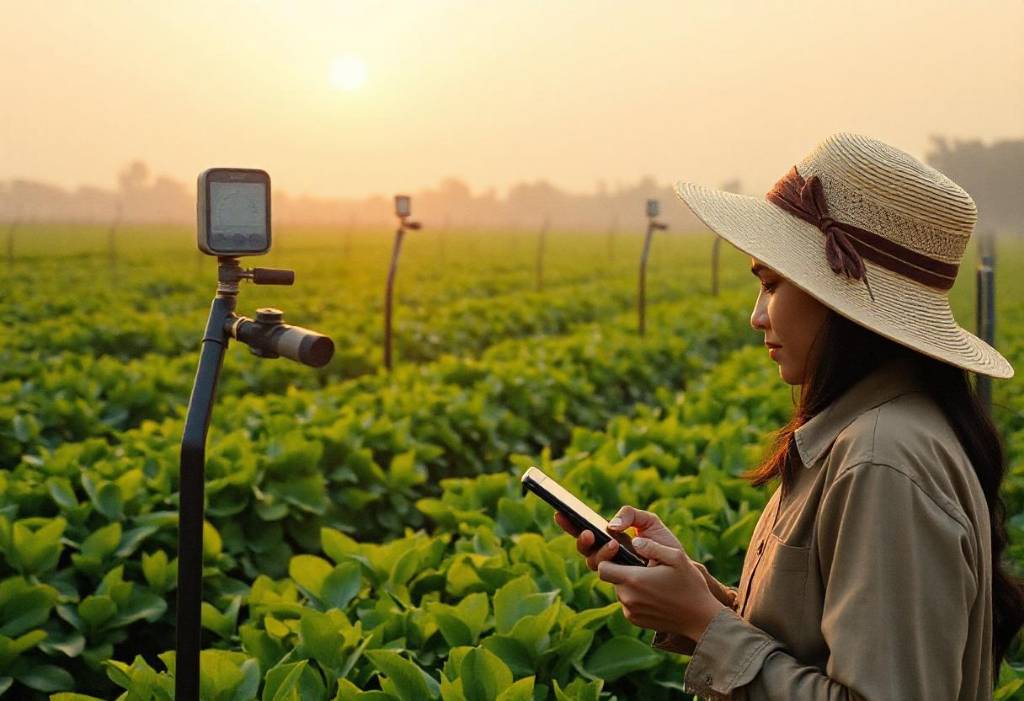Recently, the farming process has become more productive with the help of technology. To meet the increasing demand for fresh products, farmers and businesses need to work fast to fulfil the supply without sacrificing the quality.
The integration with Internet of Things has been implemented across industries, including agriculture. With smart farming, farmers and companies can smoothly monitor the crop fields with minimal effort.
As a result, the agriculture IoT market is seeing an upward trajectory. According to a research firm, estimated that the agriculture IoT market size would reach 26.1 billion in 2029.
The Advantages
Smart farming can provide invaluable help for farmers.
- Data collection
Integrated with IoT, sensors that are installed in the field can provide valuable information regarding crop health, the weather, soil texture and components, and other information. This data will automatically be collected and processed. The data analysis will offer charts and graphs that can contribute to better decision making.
- Improve efficiency with automation
Farmers were used to being swamped with abundant work. They have to monitor the crops, spray pesticides, and do the harvest manually all by themselves. Now, some work can be done automatically without any farmer’s participation. For example, automated irrigation systems. This system will take water using pipes in the farm and can be controlled either manually or automatically. In addition, by monitoring the crop using smartphone, farmers can regularly control the field without having to go there, thus they can save time and energy.
- Reduce energy consumption
By knowing when the right time to water is, farmers can consume less energy by watering on irrigation or applying fertilizers only when it is necessary.
- Control production
Farmers can also take more control of their production. With the valuable data provided by IoT, they know what can be done to get more products or to increase the quality of the crops. This can help them to reach the production targets.
- Costs reduction
With everything managed by the IoT, farmers can reduce labor costs and energy expenses thus saving the operational costs. In addition, with monitoring systems, farmers can make the right decision without having to spend any avoidable costs.
- Lowering risks in production
The sensors can provide essential data throughout the farming process that can minimize the production risks. That includes lack of nutrients in the soil, crops infection, insufficient water supply, and others.
- Minimize waste
By lowering the production risks, farmers can reduce waste by eliminating lower quality agricultural products. Besides, the sensors also help farmers to use resources, such as water or fertilizer, more efficiently.
What are the Technologies?
Let’s see what technologies are involved in the smart farming method.
- Drones
In agriculture, drones can help to maximize agricultural activities. It can be utilized for crop monitoring, mapping, farm surveying, or crop spraying. Drones can also collect data to make decisions regarding planting, irrigation, and others.
- Robotics
There are various robotics that can help the productivity in the agricultural sector. Weeding robots, for example, can detect weed and eliminate them by spraying them using their robotic arms. Meanwhile, harvesting robotics can use image processing to determine which fruits or vegetables to pick and harvest them accordingly.
In the industry, farmers used to pick up heavy loads. With material handling robots, they can help the farmers by lifting heavy materials. Besides, they also can carry out tasks such as plant spacing.
By using GPS, farmers can move tractors or other vehicles remotely with a controller. The machine navigation also has automatic obstacle detection that can determine different terrains. With this technology, farmers can monitor progress through their smartphone, thus streamline manual tasks.
- Remote sensing
This technology uses sensors to gather data and any anomalies which will be transmitted to analytical tools. The analysis can provide valuable insights for the farmers.
Remote sensing is important in crop monitoring, as it can monitor humidity, size, temperature, or light in the crops’ surroundings. Remote sensing will alert farmers if it detects anomalies, therefore can prevent diseases from spreading.
The sensors can also analyze the soil quality to figure out the soil health data and make the adjustment needed.
- Computer imaging
By placing sensor cameras around the farm, digital image processing will use features such as infrared to detect anomalies and compare images over a period of time. Combined with machine learning, computer imaging can conduct quality control, sorting agricultural products, and monitoring irrigation.
However, there are some challenges that this market needs to face. The high cost to install and maintain the technology can be a barrier, especially for farmers in the rural area. In addition, this technology will also require highly skilled field staff to manage the data and operate the equipment. Limited access to stable internet connection in remote areas and data security concerns can further hinder the implementation and expansion of this technology.
